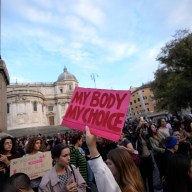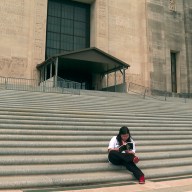By Lucia Mutikani
WASHINGTON (Reuters) – U.S. consumer prices increased in January, with a gauge of underlying inflation posting its largest gain in 12 months, bolstering views that price pressures will accelerate this year.
Inflation is also likely to get a lift from a tightening labor market. Other data on Thursday showed the number of Americans filing for unemployment benefits fell last week to the lowest level in just over 48 years.
The inflation outlook also got a boost from a survey showing prices paid by manufacturers for raw materials jumped in February to levels last seen in May 2011. A robust labor market and rising inflation could force the Federal Reserve to raise interest rates a bit more aggressively this year than currently anticipated to prevent the economy from overheating.
The Fed has forecast three rate hikes in 2018. U.S. financial markets have priced in a rate increase this month.
The Commerce Department said consumer prices as measured by the personal consumption expenditures (PCE) price index rose 0.4 percent. That was the biggest increase since September and followed a 0.1 percent gain in December. In the 12 months through January, the PCE price index rose 1.7 percent after a similar gain in December.
Excluding the volatile food and energy components, the PCE price index advanced 0.3 percent in January – the largest gain since January 2017. The so-called core PCE price index rose 0.2 percent in December. Unfavorable base effects kept the annual increase in the core PCE price index at 1.5 percent in January.
The inflation gains were in line with economists’ expectations. The core PCE index is the Fed’s preferred inflation measure and has undershot the U.S. central bank’s 2 percent target since mid-2012.
Inflation is expected to breach its target this year as a tightening labor market boosts wage growth. Faster economic growth, spurred by a $1.5 trillion tax cut package and increased government spending, is also seen stoking inflation.
Fed Chairman Jerome Powell on Tuesday offered an upbeat assessment of the economy, telling U.S. lawmakers “my personal outlook for the economy has strengthened since December.” Powell also acknowledged that “fiscal policy is becoming more stimulative.”
Those remarks prompted traders to raise their bets on four rate increases this year. Economists expect policymakers will revise up their interest rate projections at the March 20-21 meeting.
In another report, the Institute for Supply Management (ISM) said its index of prices paid by factories increased to a reading of 74.2 in February from 72.7 in January.
The ISM’s overall index of national factory activity jumped to a reading of 60.8 last month from 59.1 in January amid strong order growth and hiring. A reading above 50 in the ISM index indicates growth in manufacturing, which accounts for about 12 percent of the U.S. economy.
The dollar extended gains versus a basket of currencies after the data while U.S. Treasuries pared gains. U.S. stocks were trading slightly lower.
CONSUMER SPENDING SLOWS
Higher inflation cut into consumer spending growth in January. Consumer spending, which accounts for more than two-thirds of U.S. economic activity, gained 0.2 percent. That was the smallest increase since August and followed a 0.4 percent advance in December.
When adjusted for inflation, consumer spending fell 0.1 percent, declining for the first time since January 2017. The so-called real consumer spending rose 0.2 percent in December.
The drop in real consumer spending in January suggests consumption will slow from the fourth-quarter’s robust 3.8 percent annualized pace.
It was also the latest indication that economic growth moderated at the start of the year after a 2.5 percent rate of expansion in the fourth quarter. Industrial production, home sales and core capital goods orders fell in January.
But spending remains underpinned by a strong labor market. In a third report on Thursday, the Labor Department said initial claims for state unemployment benefits dropped 10,000 to a seasonally adjusted 210,000 for the week ended Feb. 24, the lowest level since December 1969.
Fed officials consider the labor market to be near or a little beyond full employment. The jobless rate is at a 17-year low of 4.1 percent.
Consumer spending could also get a lift from the tax cuts, which boosted wages and savings in January.
Personal income rose 0.4 percent after increasing by the same margin in December. The Commerce Department’s Bureau of Economic Analysis estimates that the tax package reduced personal income taxes by $115.5 billion at an annual rate.
Wages increased 0.5 percent in January, bolstered by one-off bonuses that businesses gave workers as part of the tax-cut windfall. Wages rose 0.4 percent in December.
Savings increased to $464.4 billion in January from $363.2 billion in the prior month. The saving rate jumped to 3.2 percent from 2.5 percent in December.
(Reporting by Lucia Mutikani; Editing by Andrea Ricci)


















